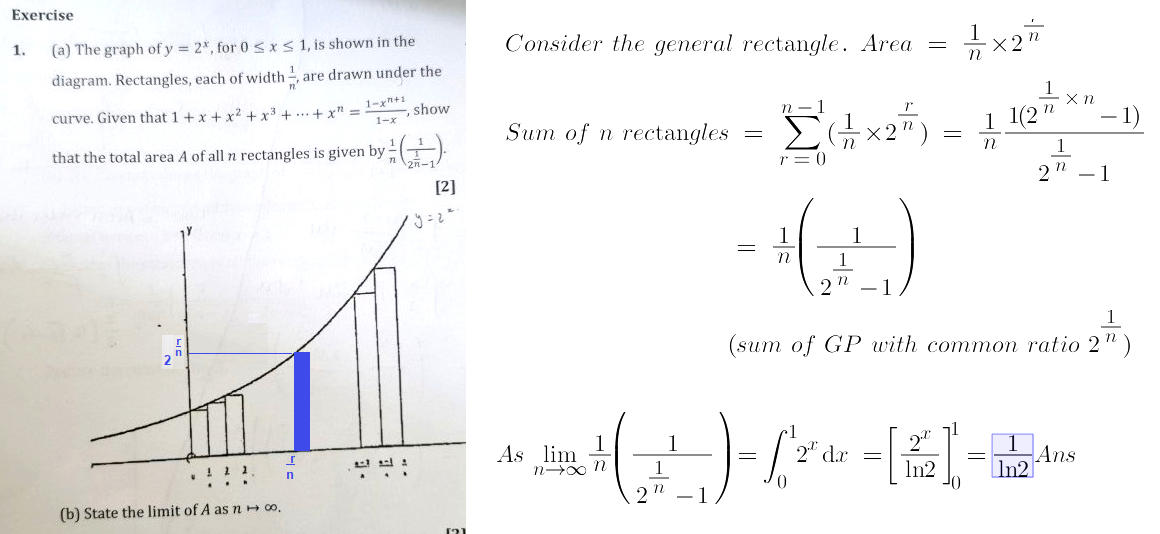Ask Singapore Homework?
Upload a photo of a Singapore homework and someone will email you the solution for free.

Question
junior college 1 | H2 Maths
One Answer Below
Anyone can contribute an answer, even non-tutors.

Hii can u help me with this qns pls? Thanku!!
= Width × height
= 1/n × 2⁰
= 1/n × 1
(because when x = 0, y = 2⁰ = 1. You use the left side of each rectangle that touches the graph to determine its height)
Area of second shortest rectangle = 1/n × 2¹/ⁿ
Area of third rectangle = 1/n × 2²/ⁿ
Area of fourth rectangle = 1/n × 2³/ⁿ
...
Area of tallest rectangle = 1/n × 2⁽ⁿ⁻¹⁾/ⁿ
Notice the common factor 1/n so we can factor this out (distributive law of multiplication)
Total area of all rectangles
= 1/n (1 + 2¹/ⁿ + 2²/ⁿ + 2³/ⁿ + ... + 2⁽ⁿ⁻¹⁾/ⁿ )
= 1/n (1 + 2¹/ⁿ + (2¹/ⁿ)² + (2¹/ⁿ)³ + ... + (2¹/ⁿ)ⁿ⁻¹ )
= 1/n (1 - (2¹/ⁿ)⁽ⁿ⁻¹⁾⁺¹ ) / (1 - 2¹/ⁿ)
Here we are taking x = 2¹/ⁿ , n is replaced by n - 1, and we apply the given equation.
= 1/n (1 - (2¹/ⁿ)ⁿ ) / (1 - 2¹/ⁿ)
= 1/n (1 - 2¹) / (1 - 2¹/ⁿ)
= 1/n (-1)/(1 - 2¹/ⁿ)
= 1/n (1/(2¹/ⁿ - 1))
(Shown)
This means the width of each rectangle becomes smaller and smaller and so small and tends to 0.
Basically , the entire area under the curve is covered with no gaps.
So this is just integrating y = 2ˣ (area under the curve) from x = 0 to x = 1 (recall that n/n = 1)
∫₀¹ 2ˣ dx
= [1/ln2 (2ˣ)]₀¹
= [1/ln2 (2¹)] - [1/ln2 (2⁰)]
= 2/ln2 - 1/ln2
= 1/ln2
See 1 Answer





